Don’t forget your horses when making regenerative grazing plans
The same principles apply as when grazing ruminants, with adjustments for horses’ grazing habits and needs.
Several years before Joe Pokay started as general ranch manager at Noble Research Institute, he experimented with adaptively grazing his working horses, moving them from one part of the pasture to another to help the grass.
“I just knew I never liked the way the horse traps looked, and they’re usually right by your house,” Pokay says. “When I first started, I didn’t really understand what I was doing with the rest periods and all that,” he says, but as he fully adopted adaptive multi-paddock grazing, he found that “a horse pasture doesn’t have to be ‘sacrificial’ land.”
“Every acre matters,” Pokay says. “If I apply the same principles to the 25 acres my horses graze as I do to the rest of the ranch, it’ll benefit from the same positive effects: fresh grass, better nutrition, better health for the animals, better health for the soil, and I’m all about that.”

Same soil health principles, different expectations
If you want to apply regenerative practices to every acre, start by simply recognizing the ways your horses are, in fact, going to differ from your commodity livestock.
“If a cow falls off, loses condition, doesn’t get bred back, she’s pretty primed to be culled. But I’m not going to do that with my horses,” Pokay says. “I’m not going to wreck a good horse by trying to graze them too tight. There are some concessions I’ll make to keep a good horse around. But I’m not going to wreck my soil to do it.”
It is true that because of their top teeth, horses tend to graze closer to the ground. That can be especially damaging to tender, new growth.
“The hardest part of grazing horses is to just keep them moving fast enough to maintain condition, applying enough density, and allowing the tender stuff a chance to come back and regenerate after that first bite,” he says.
Plants may need a longer recovery period after a horse graze than a ruminant graze, but Pokay says the key is to pay close attention to the plants, no matter the animals you’re using.
“You can’t just wholesale apply a certain management to all horses, because some horses handle grazing differently than others,” he says. With regenerative management, always use frequent observations of the animals, plants, and land as your guide.
Perhaps the most challenging part of managing horses’ grazing is the fact that for most, the herd size is sometimes just one or a handful of horses. With these differences in mind, here are the top five lessons he’s learned while incorporating his horses into a regenerative grazing plan:
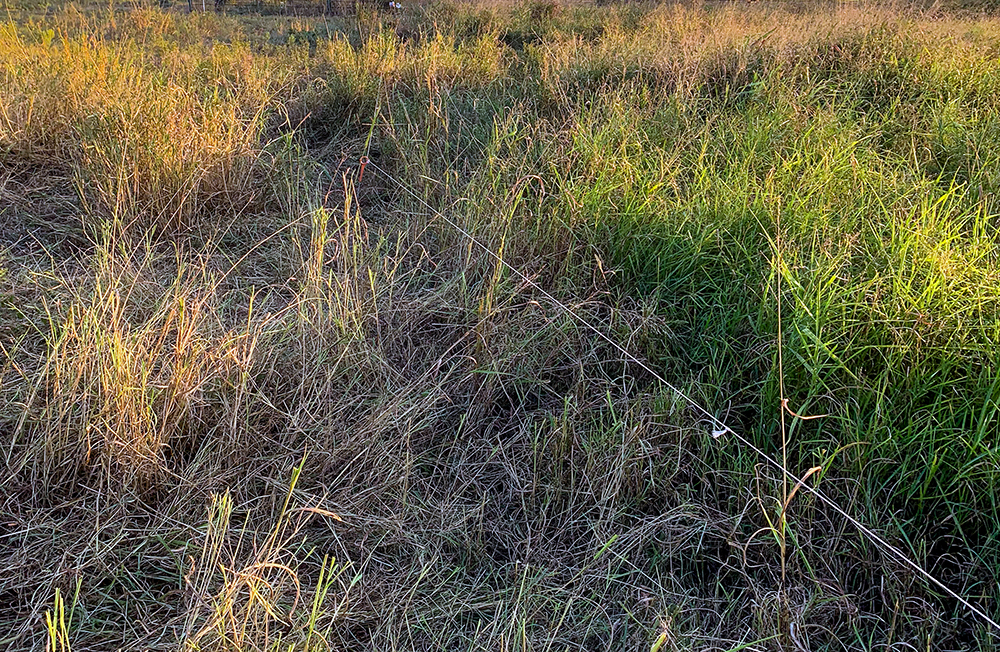
1. Create stock density, even with small numbers. As with ruminant animals, the key when grazing horses is still to create opportunity for adequate plant rest and recovery. With small numbers on small acreage, that often means creating many very small paddocks.
At times, Pokay has used paddocks of less than one-tenth of an acre, equating to roughly 100,000 pounds of stock density with his five horses. He saves that heavy density for high-impact grazing, like in the middle of summer to knock down tall, warm-season plant growth. He moves his horses through very small grazing cells quickly in order to make an impact and give the grazed grass a long recovery time. When new grass emerges early in the season, he grazes larger paddocks and tries to keep the horses moving to avoid potentially damaging the tender plants.
It might sound like a lot of work to build so many small paddocks, but Pokay says at those sizes, it’s a simple task.
“Remember at this scale, you’re building fence in feet, not miles,” he says.
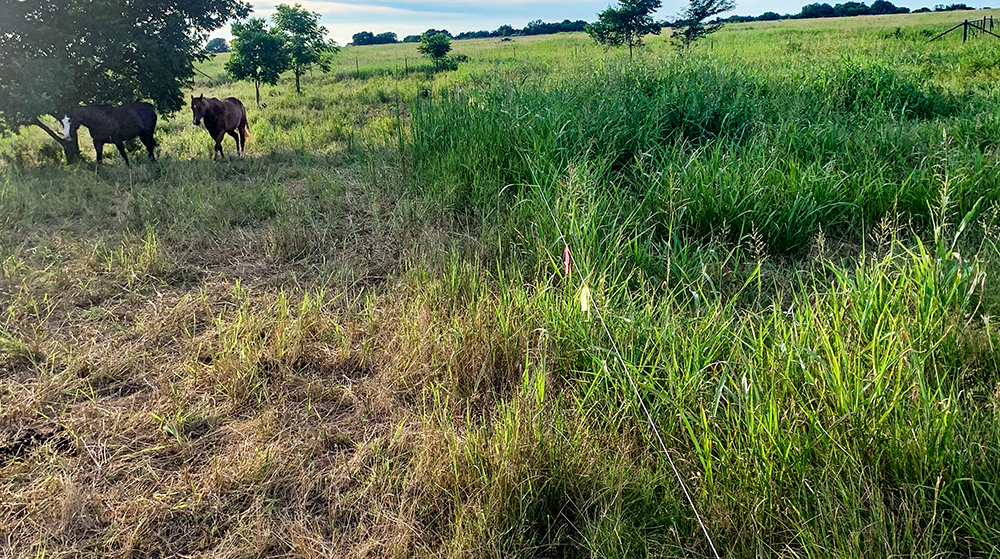
2. Consider mechanical harvest if the horses are too choosy. Even with a high stock density, he doesn’t always get the even graze he desires.
“Horses can be a little more picky, so sometimes I end up with tall plants that are oxidizing,” he says. When he sees leftover, dead growth piling up, he has followed grazing with a brush hog (rotary cutter) to create thatch and ground cover. Be prepared to let the land fully recovery after a mechanical harvest like this, he says. Depending on local conditions and weather, it might take up to 200 to 250 days for the forage to grow to grazing height.
He has also had success with brush-hogging before a light graze, laying the grass down for the horses to eat clippings off the ground.

3. Use smart solutions to keep water from being your limiting factor. An advantage of building small grazing cells close to a house or other outbuildings when possible can be the presence of convenient water hydrants. To take advantage of this, Pokay mounted a float onto the side of a heavy-duty, two-wheeled hand cart. Now it’s a portable water tank he can reach with simple garden hoses to fill, then easily dump and roll on to the next paddock.
4. Get creative with paddock shapes, sizes for back-grazing success. Even with a convenient, mobile watering system, Pokay still uses back-grazing to keep horses moving to fresh grass without having to move equipment constantly. Back-grazing allows animals to return to a previously grazed area, usually in order to return to a fixed point of water or shade.
“The problem is, when you’re back-grazing to water, it’s really hard to not let that area around the water get way more impact than anywhere else,” Pokay says.
Over years of experimentation, what he’s liked most is an inverted-triangle paddock, with water in the middle of the wide, triangle base. As he moves animals away from the water source to the triangle point, the paddock sizes get incrementally smaller.
He creates the same effect using a lane design that back-grazes to water or shade by varying the amount of newly allocated grass each day.
“By the time I get to the end, I might be only giving them five feet of fresh grass at the end of the fence, whereas at the beginning they got 50 feet. But that five-foot area grazed for one day gets the same impact as the big, 50-foot area near the water that might have had five days’ worth of grazing on it.”
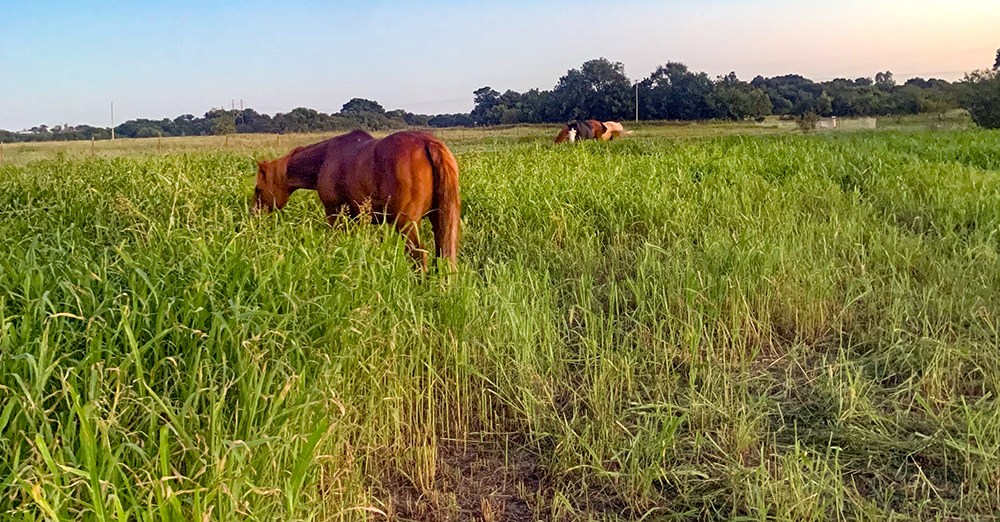
5. Regain overused areas with variation, focused recovery. In some cases, he’s built a travel lane that leads animals back to shade or water, creating what he admits is a short-term sacrifice.
“Especially one summer, during the drought, when it was so hot I had this one permanently fenced trap they had to come back to for shade, so it looked like a dry lot,” Pokay says.
But that fall, he spread old hay over the area and broadcast a combination of rye, wheat and winter pea seed. With good winter moisture and 200 days of rest, an abundant crop reclaimed the bare ground.
“That stuff was over 8 inches tall, and I grazed it three or four times with the horses after that,” Pokay says. “So, you can reclaim ground, and you can fix those problem areas, if you apply the principles.”
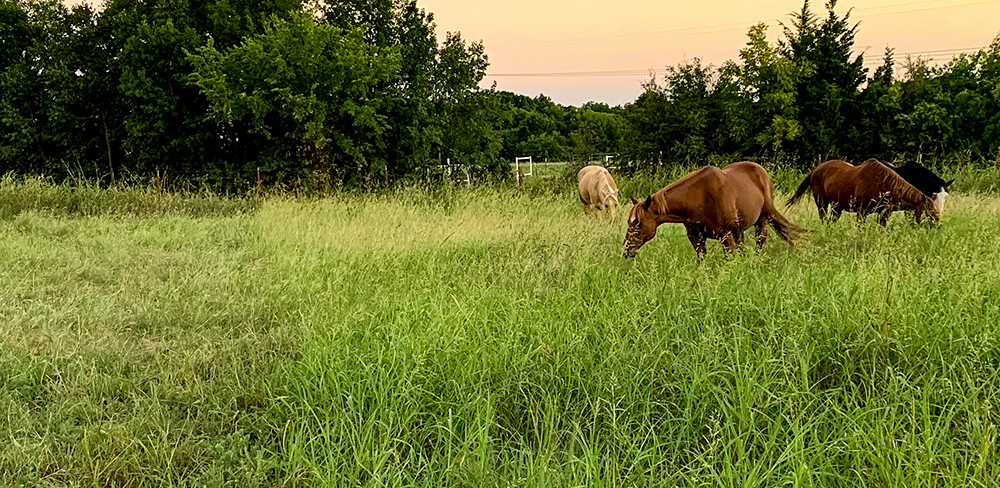
The results? Happier horses, healthier soil.
Now a couple years into grazing this land, Pokay says he’s beginning to see more diversity in the native grasses.
“There’s an area right behind my house that was all johnsongrass when I moved in, and just last fall, I started seeing some big bluestem come in again. That’s really encouraging to me.”
The quick moves between paddocks when flies are hatching help keep the fly load down, he’s noticed, and reduce the need for a de-worming treatment to once a year. The goal he continues to work toward with his horses, as well as with all livestock on the Noble Ranches, is to graze them year-round.
“So, it’s good for the horses and their well-being, and it’s good for the soil, and my ultimate goal is to improve the soil,” he says.

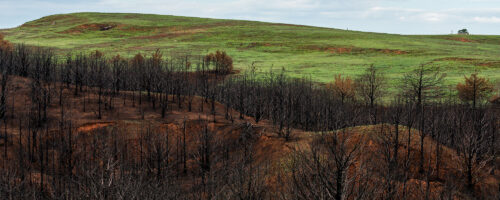

Comment